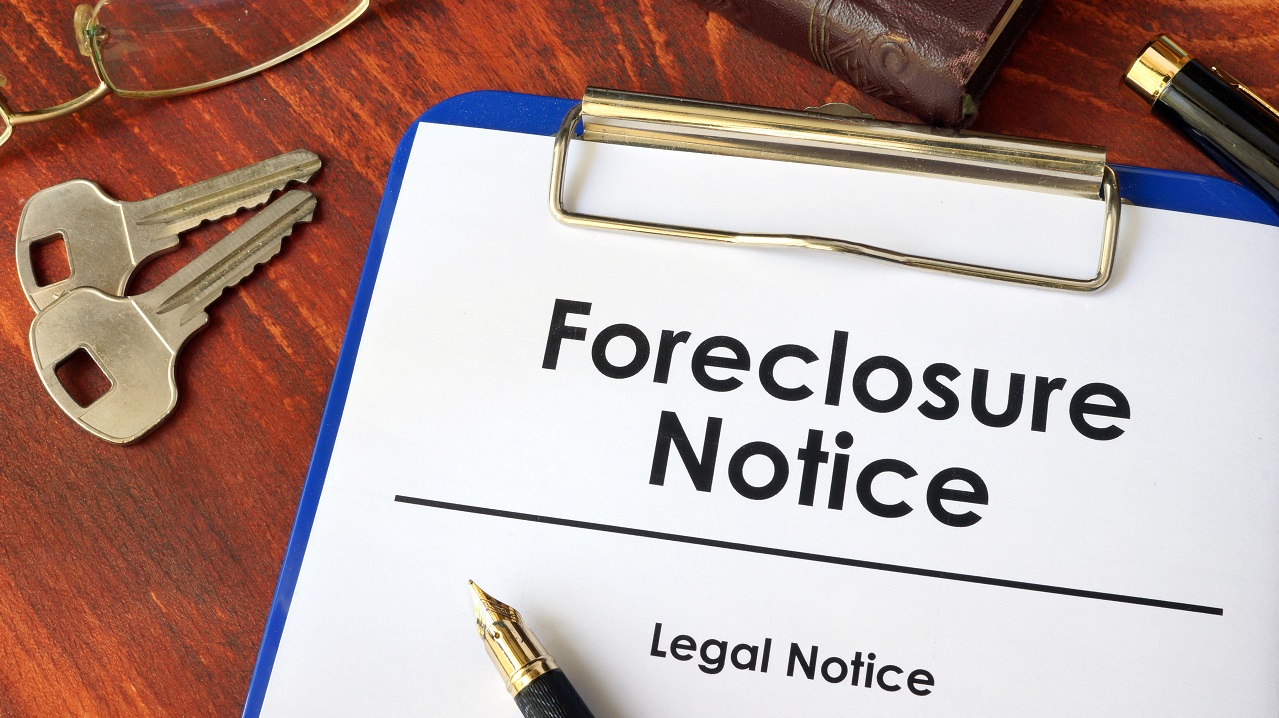A commercial foreclosure occurs because the borrower hasn’t kept up on the mortgage payments or has violated another term of a commercial loan, such as not maintaining the debt coverage ratio required by the lender or not paying property tax. When a lender forecloses it takes back the property from the borrower.
Each state has its own laws covering commercial foreclosures. Here are the key items to know about foreclosures in commercial real estate.
There Are Two Types Of Commercial Foreclosures
The two types of commercial real estate foreclosures are judicial and nonjudicial. The specific foreclosure process that is followed depends on the state where the property is located and the terms and conditions of the mortgage document.
Judicial foreclosure process
The judicial foreclosure process requires the lender to go to court and file a lawsuit against the borrower — sometimes called a notice to “cure or quit”. The borrower then has a certain amount of time – usually between 20 and 30 days – to file a response with the court.
If the borrower decides to contest the foreclosure, the borrower and the lender go to trial court — sometimes called “acceleration”. The auction date is set at this time and is usually 90 days from the filing of the acceleration. If the lender wins the lawsuit, a judgment of foreclosure and order of sale is awarded to the lender. A foreclosure sale is scheduled to sell the property and satisfy the outstanding mortgage debt.
Because the courts are involved, judicial foreclosures usually take much more time to complete than nonjudicial foreclosures.
Nonjudicial foreclosure process
In some states, a lender can use the nonjudicial foreclosure process to take the property back from the borrower. State law must allow nonjudicial foreclosure, and the loan documents must include a power of sale clause.
As the name implies, nonjudicial foreclosures are a legal alternative to the court system, allowing lenders to foreclose on a property much more quickly than with a judicial foreclosure. The exact steps followed during a nonjudicial foreclosure vary depending on jurisdiction, but in general, they include mailing the borrower a written notice of default, posting a notice of sale on the property, then foreclosing and selling the property at auction to satisfy the outstanding loan amount.
Twenty-nine states currently allow nonjudicial foreclosures, including California, the District of Columbia, Texas, and West Virginia.
Court-Appointed Receivers In The Commercial Foreclosure Process
Even with a faster nonjudicial foreclosure process, foreclosure can take several months. When the acceleration documents are filed, the court will usually appoint a receiver. The receiver takes over ownership responsibilities from the defaulting borrower.
In both the judicial and nonjudicial commercial foreclosure process the lender can ask the court to appoint a receiver to manage the property until the foreclosure is finished. Responsibilities of a court-appointed receiver include:
- Maintaining the property so that it does not deteriorate,
- Managing the property so that it is secure and insured,
- Collecting rents from tenants and crediting that income toward the borrower’s outstanding mortgage debt.
What To Expect During A Commercial Foreclosure Sale
During a commercial foreclosure sale, the property is sold to the highest bidder, and those sales proceeds are used to pay off the mortgage debt that the borrower owes to the lender. If there are no bids on the property, or if the bids are too low, the lender will bid on the property.
The lender’s bid – also known as a credit bid – includes everything that the borrower owes the lender: mortgage principal balance, accrued unpaid interest, late charges, legal fees, and other costs.
Lenders can avoid the commercial foreclosure sales process with a court-appointed receiver. Receivers are sometimes allowed to sell the property before the foreclosure sale takes place. This is called a “deed in lieu” or a “deed in lieu of foreclosure” sale. The court, lender, borrower, and any junior lenders must all agree to the receiver selling the foreclosed property outside of foreclosure sale.
How To Avoid A Commercial Foreclosure
In business, sometimes things don’t go as planned. If a commercial borrower is in danger of defaulting on a mortgage it’s best to talk to the lender as soon as possible.
Generally, lenders don’t want to foreclose on a commercial property. They’re not in the commercial real estate business, and they’d rather not deal with trying to find a buyer for a foreclosed property — called an REO, or real estate owned property.
Avoiding a commercial foreclosure can be a win-win for both the borrower and the lender. There are two approaches borrowers can take with a lender to try and avoid a commercial foreclosure:
Put together a forbearance plan with the lender
With a forbearance plan, the borrower agrees to catch up on overdue mortgage payments – including interest and late fees – over a certain period of time.
Ask the lender to modify the existing mortgage
Modifying – or changing the terms and conditions – of the initial mortgage loan agreement can include lowering the interest rate in order to reduce the monthly payment amount, extending the due-date term of the loan, or allowing the borrower to personally guarantee the commercial loan.
If at any time during the foreclosure process the current borrower comes current on the debt, the foreclosure process stops and the owner returns to good standing with the lender. This can happen right up to the auction date.









